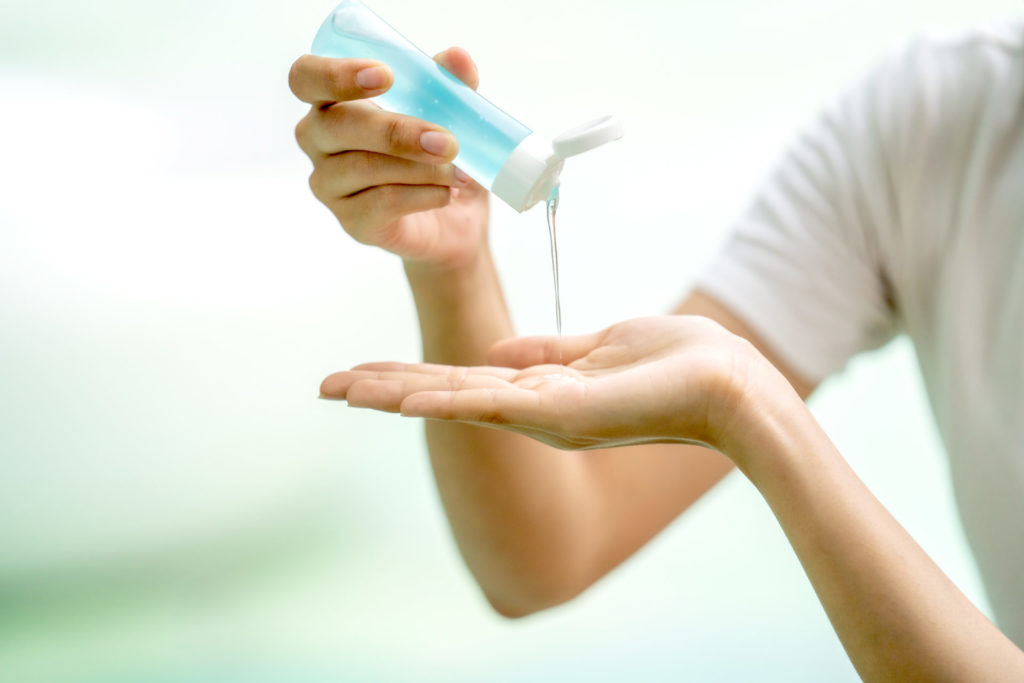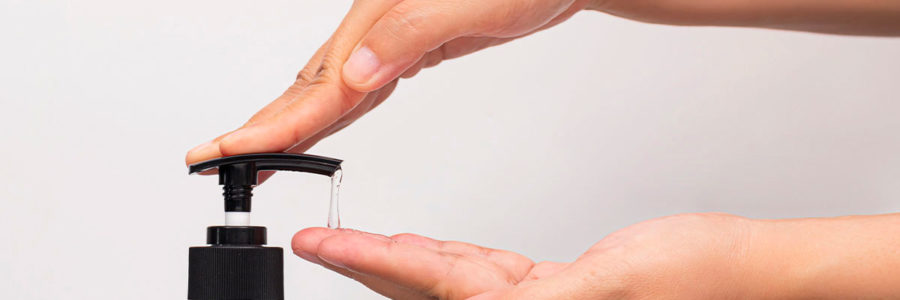FDA Ban On Hand Sanitizers: Despite the state of current international affairs and viruses, the FDA just released a list of toxic ingredients found in hand sanitizers, resulting in the recall of over 150 hand sanitizer brands on the market. Today we explore the ban and some of the top ways in which you can keep viruses at bay without exposure to toxins, and how to make your non-toxic hand sanitizer at home.
![]()
This article has been medically reviewed by Dr. Charles Penick, MD![]()
FDA Ban On Hand Sanitizers
The Food and Drug Administration is responsible for protecting the public health by ensuring the safety, efficacy, and security of human and veterinary drugs, biological products, and medical devices; and by ensuring the safety of our nation’s food supply, cosmetics, and products that emit radiation1.
The FDA’s first major move in regulating the hand sanitizer industry occurred in 2016 with the ban of triclosan. Triclosan is an ingredient added to many consumer products intended to reduce or prevent bacterial contamination and has been linked to hormone disruption and promotes drug-resistant bacterial infections2.
In more recent news, the FDA banned an additional 28 active ingredients in over-the-counter hand sanitizer sold in the US. This has resulted in the ban of over 150 different kinds of hand sanitizing sprays that were being sold on the shelves across the country. One of the ingredients banned includes the commonly used ingredient benzethonium chloride. The FDA report also acknowledged the upcoming review of three other ingredients commonly found in hand sanitizing spray: benzalkonium chloride, ethyl alcohol, and isopropyl alcohol3.
With the current state of global affairs, hand sanitizer sales are at an all-time high. People want to stay safe from viruses and keep their families healthy. Understanding how to do so requires a better understanding of germs and the theory of how they spread and how we get sick.
How Germs Spread and How We Get Sick
The most common entry gates for germs to penetrate the body is through the nose, eyes, and mouth. These gateways don’t generally come in very close contact with bacteria unless introduced via your (contaminated) hands4.
Coming into contact with a virus is not, however, the whole story. Germ theory is the concept that certain diseases are caused by microorganisms’ invasion of the body, and accounts for the need to wash bacteria off our hands and body. Terrain theory, however, takes a more holistic look at how humans interact with bacteria5.
Terrain theory argues that bacteria are a natural part of life. The more critical aspect is whether or not the host (your body) is resilient enough to fight off the “bad” bacteria. Although we contact potentially harmful bacteria regularly, not everyone gets sick, which is why immune health matters.
When we pursue germ theory as the main driver for health, harsh anti-bacterial agents are justified. The problem is that in killing the ‘bad’ bacteria, the ‘good’ bacteria is wiped out, too6. Good bacteria are your first line of defense against pathogens. Once we understand terrain theory, it becomes evident that harsh hand sanitizers can impact the immune system and whole-body health.
Our bodies (and hands) are not meant to be completely sterile environments, and so finding a balance between killing the harmful bacteria and letting the good fight it off is important. Using harsh antibacterial soaps and sanitizers has been linked to cultivating drug-resistant bacteria7. Although we want to support our body, the balance requires also letting our immune system get stronger through a certain amount of exposure to the world and all of its bacteria.
FDA Ban On Hand Sanitizers: Fighting Bad Bacteria Without Toxicity
1. Wash Your Hands
Washing your hands with old-fashioned soap and warm water is undoubtedly the easiest and most powerful way to clean bacteria without removing all the good bacteria too. This requires using an appropriate all-natural soap that does not contain harsh anti-bacterial ingredients like triclosan. Washing hands mindfully to lather the backs of your hands, between your fingers, and under your nails. Scrub your hands for at least 20 seconds, using hot water8.
2. Use a Non-Toxic Hand Sanitizer on the Go
Hand sanitizer is ideal for someone who wants to clean their hands when soap and water are unavailable. As we have examined, many hand sanitizers sold on shelves contain toxic ingredients. Even if we eliminate the brands banned by the FDA, most of the remaining products continue to use artificial scents and colors and other ingredients that are hormone-disrupting and carcinogenic9.
Hand sanitizer is also a great option to use when there may be soap and water available, but the soap in question is not a quality soap. Many brightly colored, highly artificial soaps that are commercially produced and provided in public bathrooms contain an array of toxic ingredients. Best to opt for a non-toxic hand sanitizer instead.
3. Keep Your Nostrils Clean
Since humans naturally breathe oxygen all day long, coming in contact with airborne viruses is an inevitable possibility of life. Rinsing out the sinuses once or twice a day is a great way to flush out the sinuses of potential allergens and irritations. Two options to flush out sinuses are a neti pot or saline spray.
A neti pot is a particularly shaped vessel that lets you flush the sinuses with a sterile saline solution. A nasal spray is less daunting and does a similar job by spraying such a solution into each nasal cavity.
4. Introduce Good Bacteria
Although much of the conversation regarding bacteria and viruses revolves around keeping out the bad, introducing the right kind of bacteria may be even more important. As we have explored with ‘terrain theory’: bacteria is a part of life. Problems arise when there is an imbalance. Apart from taking precautions to avoid over-exposure to pathogens, viruses, and harmful bacteria, one thing everyone can control is taking in more of the foodstuff10.
Probiotics are one commonly prescribed option to introduce good bacteria into the gut. With probiotics, it’s important to remember: rotate, rotate, rotate. Taking in only one brand (even if it has 5-10 strains) will narrow your microbiome if you continue to take it long-term. There are millions of kinds of bacteria in the world, so taking in the same 5-10 will not serve you in the long run. A healthy microbiome should contain 20-30 thousand strains of good bacteria11.
Fermented foods are a great way to introduce good bacteria into the gut, and they also help boost digestion12. Fermented foods include sauerkraut, yogurt, kefir, kombucha, kimchi, and kvass. Fermented foods are one of the best ways to get high amounts of good bacteria without breaking the bank.
Finally, the most essential way to introduce good bacteria into your body is to get outside. Spending time in an array of wild environments (nature) and breathing in the air will introduce airborne bacteria into your microbiome13. From the beach to the forest to the mountains: breathing in the air in clean environments does wonders for your microbiome. Getting in contact with the dirt is even better and can introduce soil-based spores into the body. Spend some time barefoot, and you will also benefit from earthing!
FDA Ban On Hand Sanitizers: DIY Non-Toxic Hand Sanitizer Recipe

There are various ways to make your own hand sanitizer, some more potent than others. Recipes that include rubbing alcohol are stronger but may be too harsh for children. For children, the formula could be made by simply withholding alcohol. For an even more potent (and yet, also harsher on the skin), the ratios of rubbing alcohol to aloe vera can be swapped.
Ingredients
- One tablespoon of rubbing alcohol
- ¼ cup aloe vera gel (a shelf-stable brand is preferable; fresh aloe is not suited for this recipe)
- 25 drops of naturally anti-bacterial essential oil(s) like cinnamon, clove, pimento, thyme, oregano, rosemary, lemon, and tea tree
- Thin to desired consistency using distilled water or colloidal silver (about 1 tablespoon max)
- Empty spray bottle
Instructions
- Mix all ingredients in a bowl apart from the distilled water (or colloidal silver).
- Thin so desired consistency using distilled water or silver.
- Place in an empty spray or squirt bottle.
Summary
A recent FDA ban on various toxic ingredients found in hand sanitizers being sold across the country has resulted in the recall of over 150 products being sold in the US. Having an understanding of terrain theory can help us better tackle the issue of germs and disease without harming the body in the long run. Making your own hand sanitizer at home can be done easily with rubbing alcohol, aloe vera, and essential oils.
References
- Commissioner, Office of the. “The FDA- What We Do.” U.S. Food and Drug Administration, FDA, www.fda.gov/about-fda/what-we-do.
- Commissioner, Office of the. “5 Things to Know About Triclosan.” U.S. Food and Drug Administration, FDA, www.fda.gov/consumers/consumer-updates/5-things-know-about-triclosan.
- “Safety and Effectiveness of Consumer Antiseptic Rubs; Topical Antimicrobial Drug Products for Over-the-Counter Human Use.” Federal Register, 12 Apr. 2019, www.federalregister.gov/documents/2019/04/12/2019-06791/safety-and-effectiveness-of-consumer-antiseptic-rubs-topical-antimicrobial-drug-products-for.
- “Don’t Touch Your Face.” APIC, apic.org/monthly_alerts/dont-touch-your-face/.
- National Research Council (US) Committee to Update Science, Medicine, and Animals. Science, Medicine, and Animals. Washington (DC): National Academies Press (US); 2004. A Theory of Germs. Available from: https://www.ncbi.nlm.nih.gov/books/NBK24649/
- Ballantyne, Coco. “Strange but True: Antibacterial Products May Do More Harm Than Good.” Scientific American, Scientific American, 7 June 2007, www.scientificamerican.com/article/strange-but-true-antibacterial-products-may-do-more-harm-than-good/.
- Ventola, C Lee. “The antibiotic resistance crisis: part 1: causes and threats.” P & T: a peer-reviewed journal for formulary management vol. 40,4 (2015): 277-83.
- “When and How to Wash Your Hands.” Centers for Disease Control and Prevention, Centers for Disease Control and Prevention, 1 Sept. 2020, www.cdc.gov/handwashing/when-how-handwashing.htm
- Mathur, A.K., and S.K. Khanna. “Dermal Toxicity Due to Industrial Chemicals.” Skin Pharmacology and Physiology, Karger Publishers, 19 June 2002, doi.org/10.1159/000063543.
- Enders, Guilia. Gut: the Inside Story of Our Bodys Most Underrated Organ. Greystone Books.
- Bush, Zach. “Why Probiotics Don’t Always Work.” Zach Bush MD, zachbushmd.com/wp-content/uploads/2017/04/Why-Probiotics-Dont-Always-Work-EG-BB-edit.pdf.
- Kok, Car Reen, and Robert Hutkins. “Yogurt and Other Fermented Foods as Sources of Health-Promoting Bacteria.” Nutrition Reviews, vol. 76, no. Supplement_1, 2018, pp. 4–15., doi:10.1093/nutrit/nuy056.
- Leung, Marcus H Y, and Patrick K H Lee. “The roles of the outdoors and occupants in contributing to a potential pan-microbiome of the built environment: a review.” Microbiome vol. 4,1 21. 24 May. 2016, doi:10.1186/s40168-016-0165-2
Medical Disclaimer: The information on this website is not intended to replace a one-on-one relationship with a qualified health care professional and is not intended as medical advice. It is intended to share knowledge and information. This article has been medically reviewed by Dr. Charles Penick, MD, for accuracy of the information provided, but we encourages you to make your own health care decisions based upon your research and in partnership with a qualified health care professional.


